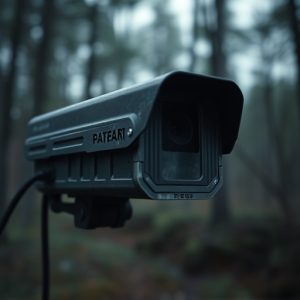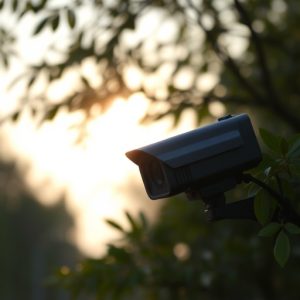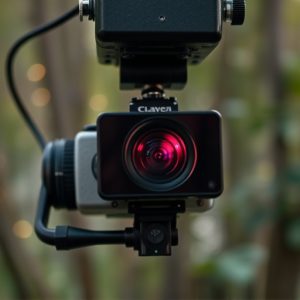Detecting Hidden Cameras: RF Technology & Home Security Checks
Disguised cameras, posing as everyday items or advanced gadgets, threaten home privacy. Radio Freque…….
Disguised cameras, posing as everyday items or advanced gadgets, threaten home privacy. Radio Frequency (RF) technology offers a cutting-edge solution, detecting wireless signals from hidden cameras. Specialized equipment like RF and thermal imaging detectors is crucial for location and neutralization. Regular inspections in common hiding spots, coupled with updated security measures, empower homeowners to protect their spaces.
Uncover the insidious world of hidden cameras with our comprehensive guide. Learn how to identify disguised cameras, from their sophisticated disguises to advanced radio frequency (RF) technology they employ. We demystify RF detection methods and equip you with essential tools and steps to conduct a thorough home security check. Discover proactive tips to prevent and counter these invasive devices, ensuring peace of mind in your own space. Strengthen your home protection by understanding the art and science of detecting disguised cameras.
- Understanding Disguised Cameras: Types and Common Disguises
- Radio Frequency (RF) Technology: How It Works in Camera Detection
- Tools and Equipment for Identifying Hidden RF Cameras
- Steps to Conduct a Thorough Home Security Check for Disguised Cameras
- Preventing and Countering Hidden Cameras: Tips for Homeowners
Understanding Disguised Cameras: Types and Common Disguises
Hidden cameras, often referred to as disguised cameras, are a growing concern in the realm of home protection. These devices can take various forms and are cleverly designed to avoid detection, making them a tricky adversary for privacy-conscious individuals. From sophisticated technology to everyday objects, the types of hidden cameras one might encounter are surprisingly diverse.
Common disguises include everyday items like smoke detectors, light bulbs, or even potted plants. More advanced models mimic common household appliances or electronic devices, such as timers, clocks, and power outlets. In today’s digital age, some even masquerade as security cameras themselves, blending seamlessly into the environment while capturing footage undetected. Staying informed about these subtle yet potent tools is essential for anyone seeking to safeguard their personal spaces from potential invasion of privacy.
Radio Frequency (RF) Technology: How It Works in Camera Detection
Radio Frequency (RF) technology has emerged as a powerful tool in the field of security and hidden camera detection. At its core, RF works by emitting and receiving radio waves that can penetrate various materials, including walls, furniture, and even some types of glass. These invisible waves carry signals that can be intercepted and analyzed to identify electronic devices like hidden cameras.
Disguised cameras often operate on specific radio frequencies to transmit video feeds wirelessly, making them harder to detect with conventional methods. RF detection systems are designed to scan these frequency bands, identifying anomalies or consistent signals that could indicate the presence of a hidden camera. By employing specialized antennas and analyzers, professionals can pinpoint the exact location of the device, ensuring comprehensive home protection against these often imperceptible surveillance tools.
Tools and Equipment for Identifying Hidden RF Cameras
Detecting hidden cameras, especially those operating via radio frequency (RF), requires specialized tools and equipment designed to pierce through walls, furniture, and other obstacles. Professionals in home protection often rely on RF detectors that can scan for signals emanating from covert cameras. These devices are capable of identifying frequencies commonly used by hidden cameras, alerting users to their presence. Additionally, thermal imaging cameras play a pivotal role in this process by visualizing temperature discrepancies, which could indicate the presence of electronic devices like disguised cameras.
For comprehensive home protection against concealed RF cameras, a combination of these tools is often employed. Experts recommend periodic checks using RF detectors followed up with visual inspections using thermal imaging technology to ensure every nook and cranny is scrutinized. This multi-layered approach guarantees that even the most cleverly hidden cameras are uncovered, providing peace of mind for homeowners concerned about their privacy and security.
Steps to Conduct a Thorough Home Security Check for Disguised Cameras
To conduct a thorough home security check for disguised cameras, start by thoroughly inspecting all potential hiding spots. These include corners, behind furniture, under desks or tables, and inside wall-mounted objects like clocks or pictures frames. Use a dedicated RF (radio frequency) detector to scan for any suspicious signals, as many hidden cameras transmit data via RF waves.
Next, consider employing an infrared (IR) thermal camera, which can detect heat signatures not visible to the naked eye. This tool is effective in identifying devices with active IR LEDs used by some disguised cameras. Additionally, check for any unusual electrical connections or power cords leading from fixtures or appliances that could indicate the presence of hidden recording equipment. Regularly update your security measures and stay informed about new techniques used by malicious actors to hide cameras, ensuring continuous protection for your home.
Preventing and Countering Hidden Cameras: Tips for Homeowners
Preventing hidden cameras in your home is a proactive step towards ensuring your privacy and safety. Start by conducting regular visual inspections, especially in areas like ceiling corners, wall crevices, and behind furniture, where disguised cameras might be installed. Look for any unusual devices or objects that could serve as camera components.
Additionally, invest in radio frequency (RF) detection tools designed to uncover hidden cameras. These devices can detect RF signals emitted by many types of concealed cameras. By using an RF detector, you can identify potential hidden camera locations and take appropriate measures to disable or remove them. This simple yet effective approach empowers homeowners to take control of their privacy and security.
Detecting hidden cameras using radio frequency (RF) technology is a powerful tool for homeowners seeking comprehensive home protection. By understanding the various types of disguised cameras and leveraging RF detection methods, you can ensure your privacy and security. Armed with the right tools and knowledge from this guide—including identifying common disguises, utilizing specialized equipment, and following thorough checking procedures—you’re well-equipped to navigate the landscape of hidden cameras for a safer home environment. Implement these measures, stay vigilant, and take proactive steps to prevent potential infringements on your privacy.


